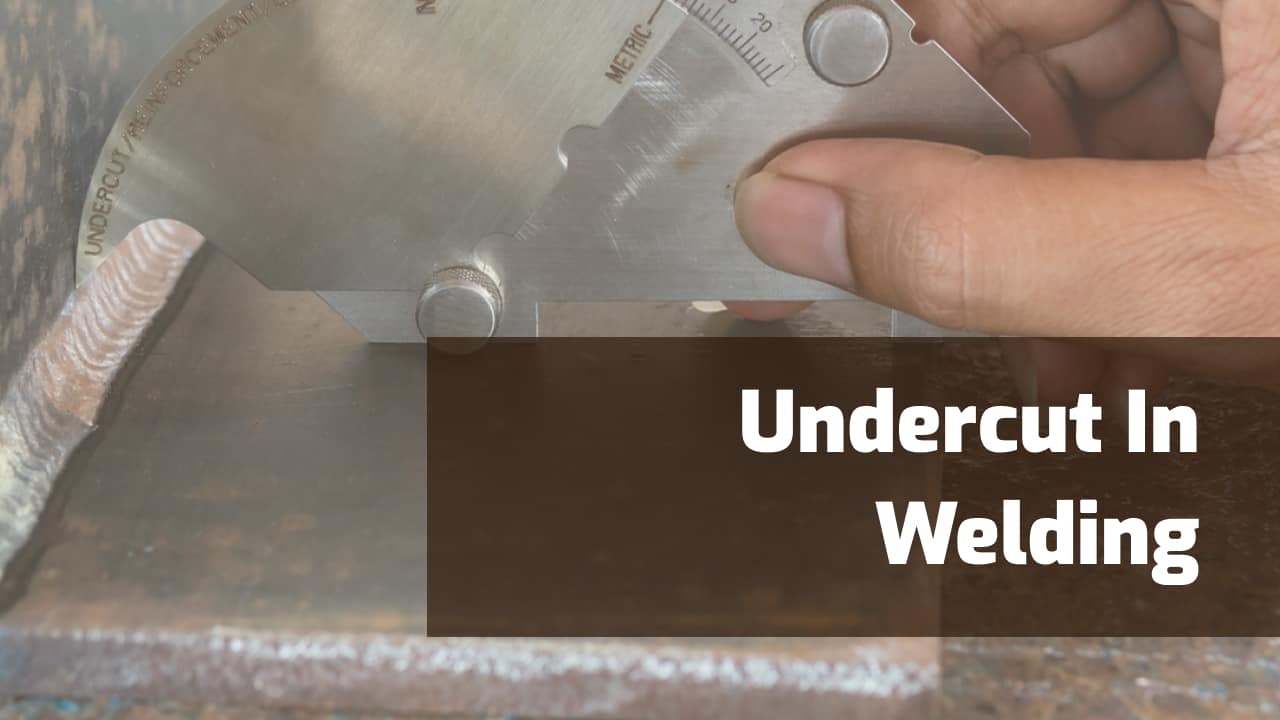Necessary Tips for Welders: Protecting Against Undercut Welding and Ensuring Stronger Weld Joints
In the realm of welding, achieving solid and sturdy weld joints is the foundation of producing high-quality job. One usual difficulty that welders typically encounter is undercut welding, which can endanger the honesty of the weld joint.

Understanding Undercut Welding
Undercut welding is a typical welding defect that happens when the weld steel stops working to effectively fill up the groove and causes a groove-like depression along the weld grain. This defect deteriorates the weld joint, making it susceptible to breaking and failing under stress. Damaging can be triggered by various aspects, consisting of too much welding existing, high welding speed, inappropriate electrode angle, incorrect electrode size, and poor welding method.
Among the major reasons for undercut welding is a discrepancy in between the welding current and the welding speed. If the welding current is as well high or the welding rate is also fast, the weld metal may not adequately fill the groove, causing damaging. Additionally, using an electrode that is as well big can lead to a comparable end result, as the excess steel can not correctly stream into the groove.
To stop undercut welding, welders need to guarantee they are using the appropriate welding specifications, preserve an appropriate electrode angle, select the proper electrode dimension, and technique correct welding strategies. By resolving these factors, welders can minimize the risk of undercutting and create more powerful, more dependable weld joints.
Proper Welding Technique
Efficient welding technique plays an essential duty in making certain the high quality and integrity of weld joints. One basic element of proper welding strategy is preserving the correct angle and range between the welding weapon and the workpiece.
In addition, a constant and constant hand activity is necessary for creating solid and resilient weld joints. Welders must aim for smooth, uniform motions to make sure even circulation of the weld product. Appropriate manipulation of the welding weapon and filler product is additionally key to attaining ideal infiltration and blend.
Furthermore, controlling the heat input and picking the suitable welding parameters based on the material being bonded are vital elements in achieving high-grade welds - Preventing weld undercut. Welders should adhere to the recommended setups offered by welding treatment specs and change them as needed based upon the certain demands of the job. By mastering correct welding techniques, welders can considerably improve the toughness and dependability of their weld joints
Choosing the Right Electrode
Preserving the appropriate angle and range in between the welding gun and the workpiece is essential when thinking about the relevance of choosing the best electrode in welding applications. The option of electrode plays a vital duty in determining the quality and strength of the weld joint. Electrodes come in various kinds, each designed for specific purposes and products.
To start with, picking the ideal electrode size is necessary. Thinner electrodes appropriate for welding slim materials, while thicker electrodes are better for thicker materials and higher warmth applications. Matching the electrode size to the density of the workpiece helps achieve a well balanced weld.
Secondly, understanding the material make-up of the electrode is essential. Various electrodes are created for welding details materials like steel, stainless steel, light weight aluminum, or cast iron. Using the correct electrode product makes certain great blend and reduces the risk of problems in the weld.
Finally, thinking about the welding setting and method is essential when choosing the electrode type. As an example, particular electrodes are better suited for upright or above welding settings, while others function well for flat or straight settings. Picking the ideal electrode based on the welding technique boosts the overall weld top quality and stability.
Preparing the Base Metal
To guarantee an effective welding process, what preliminary actions should be taken when preparing the base steel for welding? Additionally, any type of existing weld product or deposit from previous welding should be eliminated to make certain a clean surface for the new weld.

Conducting Post-Weld Inspections
After carrying out these evaluations, welders must compare the outcomes versus market criteria and job requirements to ensure that the weld joint fulfills all needed criteria. Any kind of inadequacies or variances found throughout the post-weld examination should be quickly resolved through suitable rehabilitative actions to ensure the weld's honesty. By carefully doing post-weld evaluations and without delay addressing any concerns, welders can maintain the high quality and integrity of their job, eventually contributing to the safety and longevity of the welded structures.
Final Thought

In verdict, preventing undercut welding and Our site ensuring stronger weld joints call for a combination of proper welding method, choosing the right electrode, preparing the base steel appropriately, and conducting post-weld inspections. By recognizing the reasons for undercut welding and implementing the essential safety measures, welders can generate top notch weld joints that meet sector criteria and ensure the architectural stability of the bonded parts.
Undercut welding is a typical welding issue that takes place when the weld steel stops working to correctly fill up the groove and results in a groove-like depression along the weld bead (Preventing weld undercut). Damaging can be caused by numerous elements, consisting of too much welding existing, high welding speed, incorrect electrode angle, wrong electrode dimension, and poor welding technique
One of the main factors for undercut welding is an inequality in between the welding present and the welding rate. If the welding current is too high or the welding speed is also quick, the weld pop over to these guys steel may not effectively fill the groove, leading to undercutting.Keeping the correct angle and distance in between the welding gun and the work surface is fundamental when taking into consideration the value of picking the right electrode in welding applications.
Comments on “Ultimate Overview to Preventing Weld Undercut: Tips and Techniques”